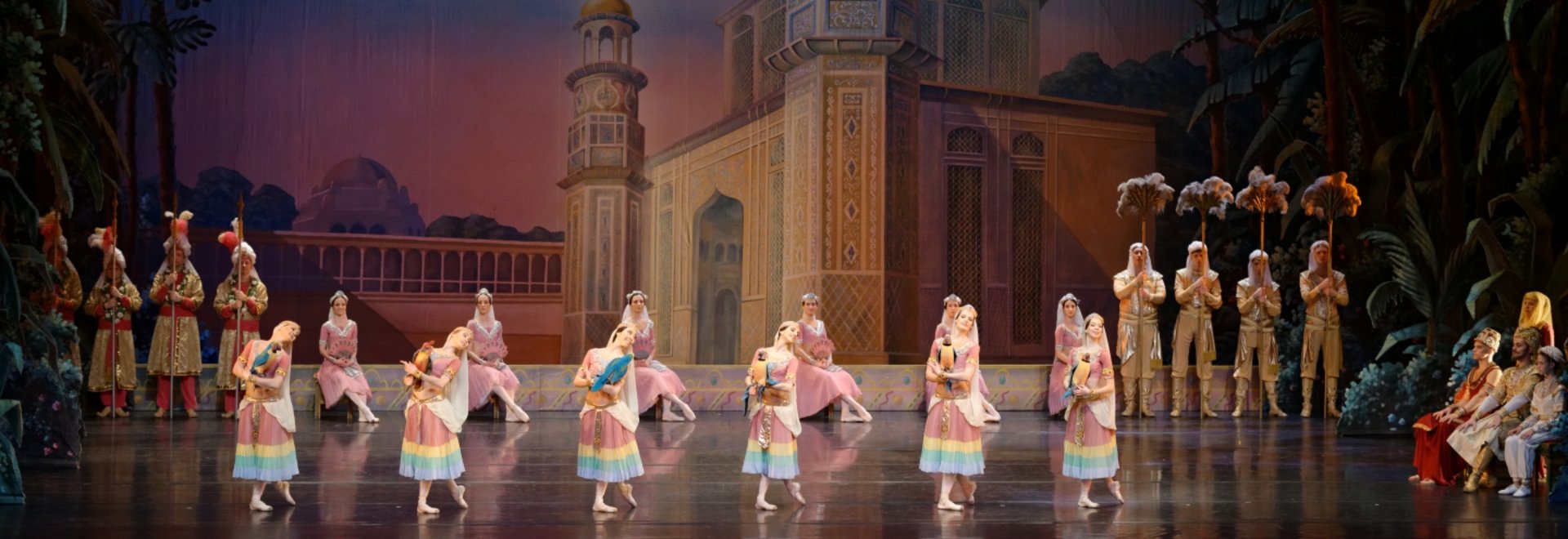
“The choreography of “La Bayadère” is considered to be the first expression of grand scale symphonism in dance, predating by seventeen years Ivanov’s masterly designs for the definitive Swan Lake (...). Ballets passed down the generations like legends, acquire patina of ritualism, but “La Bayadère” is a ritual, a poem about dancing and memory and time. Each dance seems to add something new to the previous one, like a language being learned. The ballet grows heavy with this knowledge, which at the beginning had been only a primordial utterance, and in the coda it fairly bursts with articulate splendor."
Arlene Croce, The New Yorker
Petipa constructed his ballet “La Bayadère” on a strong Romantic base using his own type of classical aesthetic. There are several typical Romantic features in this ballet – India is an exotic country, a very suitable space of action for all romantics, taking part in the performance are the ethereal beings, the whole theme of the ballet is typically romantic – selfless, overwhelming bayadère Nikiya’s love, love as the highest meaning and expression of life. The essence of “La Bayadère’s" plot is classical Indian literature, namely Kalidasa’s drama Sakuntala and Goethe’s poem The God and the Bayadere. These poetic works served as basics for more than one creation – before M. Petipa, such dramaturges as Augustin Eugène Scribe, Theofil Gautier, choreographers Charles Didelot, Filippo Taglioni and others, based their works on this special story.
Libretto for “La Bayadère” was written by Petipa himself and Sergej Chudekov, in this ballet there are certain typically melodramatic twists of the plot merged with the dramatic qualities of a romantic ballet. The music, written by Ludwig Aloisius Minkus, thanks to its rhythmical versatility and emotionality created a perfect background for a vivid, fiery work of theatrical art. However, the original artistic quality of La Bayadère (which was in no way lowered by later Petipa’s ballets, based on P. Tchaikovsky’s or A. Glazunov’s music) was based in the high-class choreography and poetic generalizations which it displayed. La Bayadère can be described as a certain encyclopaedia of symphonized forms of the classical dance.
In Lithuania “La Bayadère” has not been staged. In 2006, as a prelude to this premiere, LNOBT presented "Shadows" as a separate production (stage choreographer Ninella Kurgapkina, designer Viaceslav Okunev, conductor Robertas Šervenikas).
Premiere: 31 December, 2007